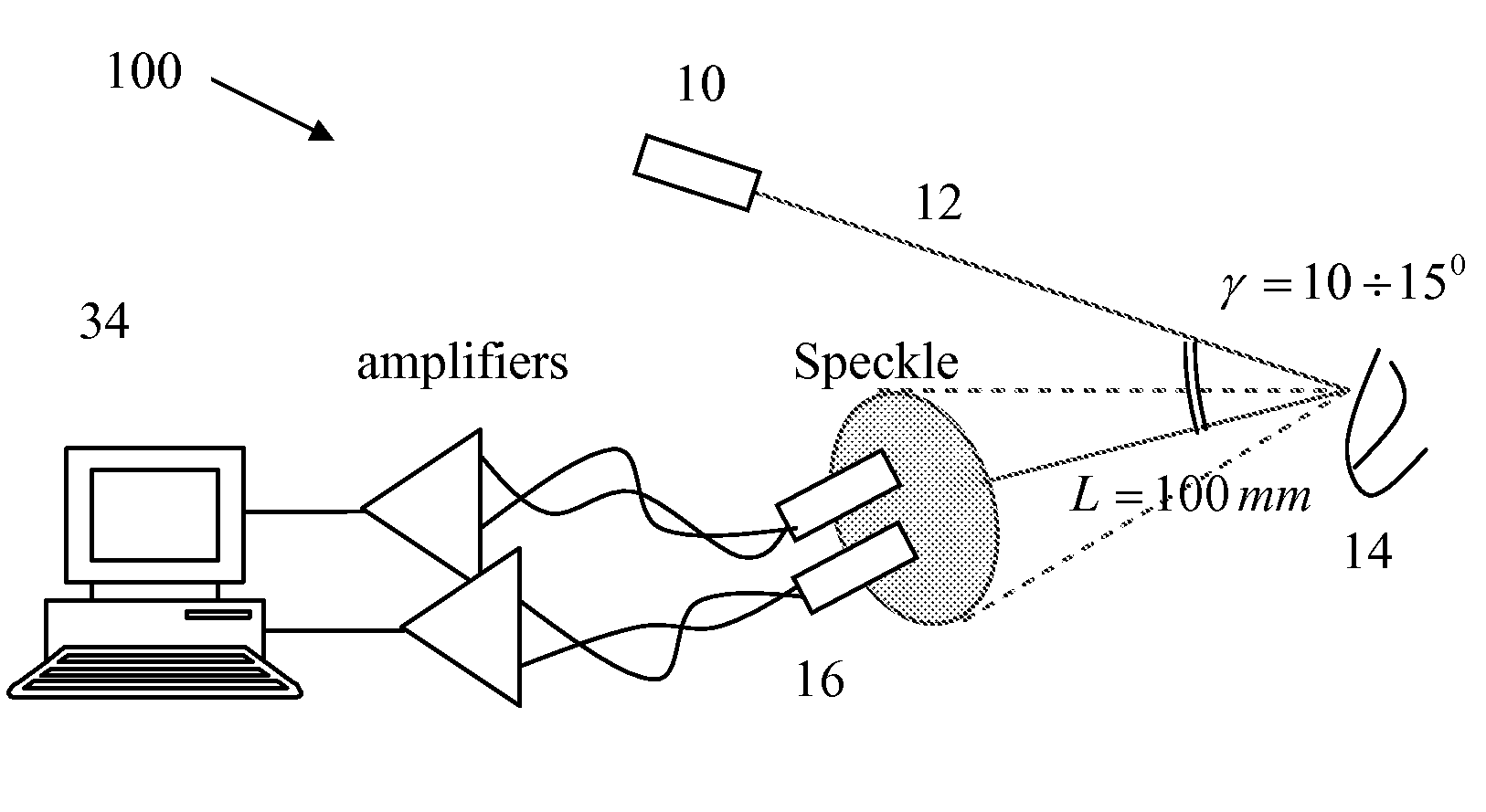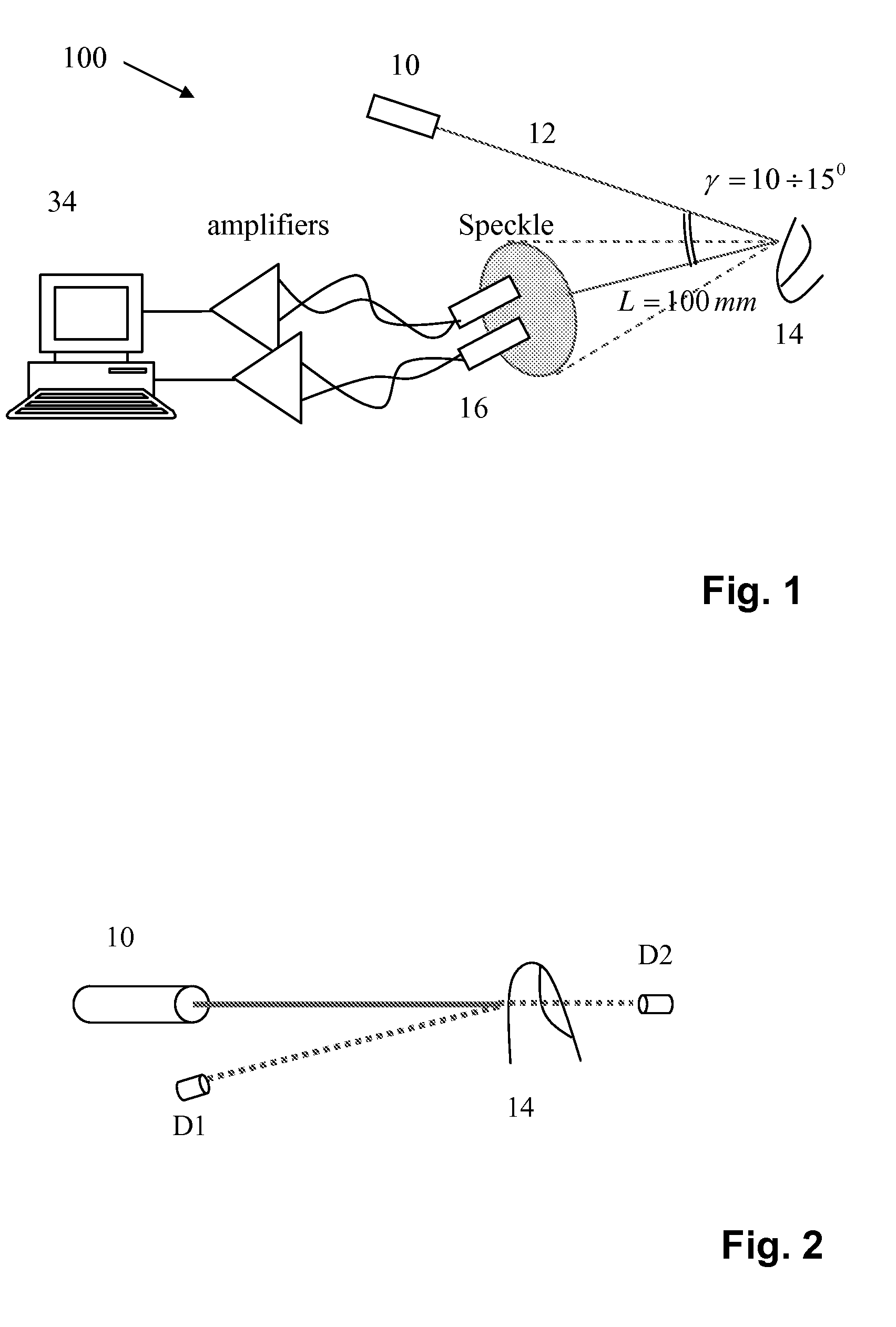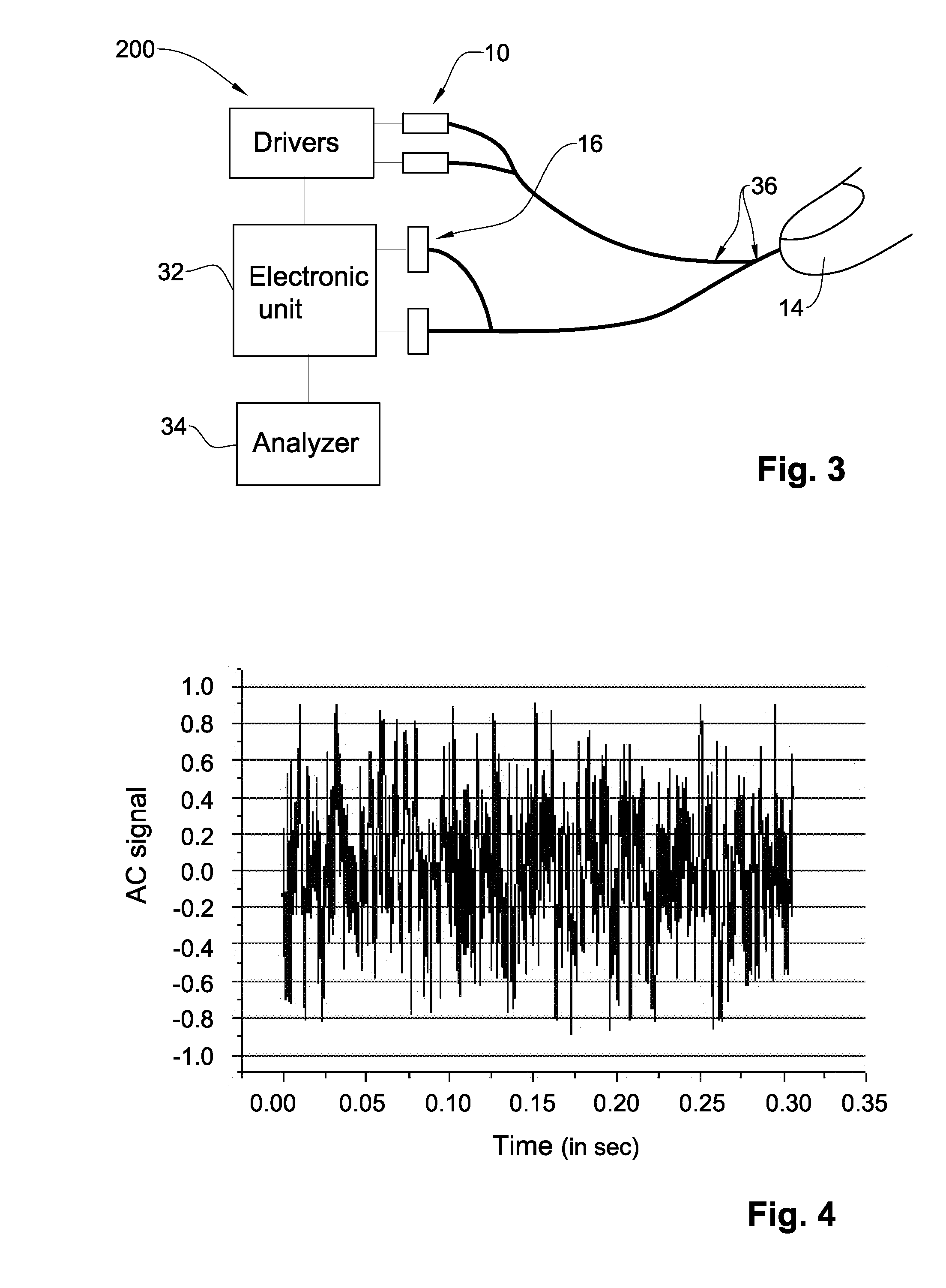System and method for in vivo measurement of biological parameters
a biological parameter and in vivo measurement technology, applied in the field of in vivo measurement of biological parameters, can solve the problems of reducing motion artifacts, affecting the detection accuracy of hemorrhoids, so as to increase the signal-to-noise ratio
- Summary
- Abstract
- Description
- Claims
- Application Information
AI Technical Summary
Benefits of technology
Problems solved by technology
Method used
Image
Examples
example 1
[0107]To develop an optimized experimental approach for noninvasive visualization of blood clotting in vivo, an experimental protocol which allows visualizing fine changes in RBC motion at high spatial and temporal resolution, deep inside the tissue was established.
[0108]The experiments were performed on occluded blood vessels and detection was carried out by modification of DLS described above. Anesthetized animal (nude mice) were placed on the stage of a setup for intravital microscopy. Temporal over systolic occlusion was created by using a mechanical occluder which produces local mechanical pressure on the area of visibly large arteries within the mouse ear. The duration of the occlusion did not exceed 10 minutes.
[0109]In the first set of experiments, the illuminated area was imaged via a microscope by a CCD camera. The exposure time T of the CCD was 50 ms. Images were acquired through easy-control software at 20 Hz. The optical design of the system allowed for simultaneous lase...
example 2
[0111]In order to monitor the blood clotting process, as well as to solve the problem of light scattering by skin and tissue, DLS from laser light was used for imaging the fine changes in RBC motion inside occluded vessels through the skin of the mouse ear. Particularly in the second set of experiments, the same animal model and procedures for animal care as described above were used.
[0112]A diode laser (670 nm, 10 mW) was coupled with a diffuser, which was adjusted to illuminate the area of a mouse ear. The illuminated area was imaged through a zoom stereo microscope by a CCD camera. The exposure time T of the CCD was 50 ms. Images were acquired through easy-control software at 20 Hz. DLS imaging of RBC motion in occluded microvessels was based on the temporal contrast of intensity fluctuations produced from laser speckles that reflected from mouse tissue.
[0113]The temporal statistics of time integrated speckles was utilized in order to obtain a two-dimensional velocity map which r...
example 3
[0118]In order to monitor the change of oxygen saturation, a DLS system having two light sources was used. The light sources have respectively a wavelength of 650 nm and 810 nm. Absorption at these wavelengths differs significantly between oxyhemoglobin and its deoxygenated form, therefore from the ratio of the absorption of the red and infrared light the oxy / deoxyhemoglobin ratio can be calculated. The ratio of the two autocorrelation parameter (R1, R2) for each wavelength was measured. The patient was asked to hold hit breath for approximately 30 seconds. As illustrated in FIG. 18, the oxygen saturation drops. Then, the breath was reactivated, illustrated by a restoration of the oxygen saturation. The graph demonstrates the behavior of ratio of R1 / R2 during this experiment and reveals good correspondence between the ratio and the induced change of oxygen saturation.
PUM
 Login to View More
Login to View More Abstract
Description
Claims
Application Information
 Login to View More
Login to View More - R&D
- Intellectual Property
- Life Sciences
- Materials
- Tech Scout
- Unparalleled Data Quality
- Higher Quality Content
- 60% Fewer Hallucinations
Browse by: Latest US Patents, China's latest patents, Technical Efficacy Thesaurus, Application Domain, Technology Topic, Popular Technical Reports.
© 2025 PatSnap. All rights reserved.Legal|Privacy policy|Modern Slavery Act Transparency Statement|Sitemap|About US| Contact US: help@patsnap.com



